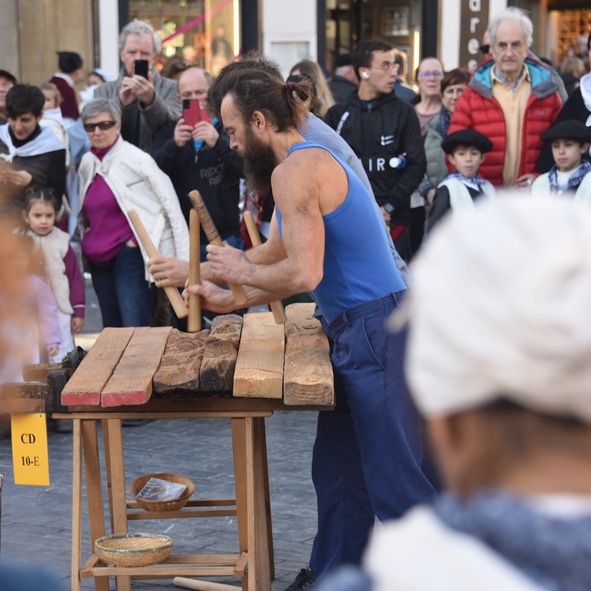The Txalaparta is a Baque music instrument that is made from stone or wood. In some places in Basque Country, it is called the zalaparta, which means racket, while in some regions, it is called the txalaparta, which implies the trot of the horse, because the sound that this instrument produces is just like the steps of the horse. In this article, we are going to learn more about the percussion instrument, txalaparta.
Txalaparta as a Communication Device
For the last 150 years, the txalaparta has been considered a communication device used for celebration, funeral, or making cider or slaked lime. After the locals make a cider, the same board used to press the apples is beaten to call their neighbors. After this, a celebration is held where they play the txalaparta cheerfully while drinking the cider. Some studies show that the txalaparta has been used this way for over a thousand years; however, where it came from and who invented it still remains to be a mystery. It is also worth mentioning that in Romania, there is a similar musical instrument they call the toaca and the semantron in Greece; they both use this instrument as a call for prayer.
Txalaparta as a Musical Instrument
As the years passed, the txalaparta evolved out of its original musical use. In fact, the traditional txalaparta got almost extinct in the 1950s when only a handful of peasants maintaining its traditional use. Fortunately, the original use of the txalaparta was revived by folklorists like Jose and Jesus Antonio Artze from the musical group called Ezdokamairu. Since then, several innovators started to make and assemble the boards so that the instrument will give off more melody. Along with this, other materials were also used to make the txalaparta.
Today, the txalaparta is commonly used in Basque music, and it is considered as an idiophone, which is also a percussion instrument. Traditional txalaparta is made with a pair of long wooden boards that are held up horizontally on its ends. It is played using special thick sticks beaten on the press handle, which is held upright in the hands. Corn husks are placed on the two ends of the txalaparta for vibration.
As the txalaparta evolved, the traditional type has been phased out, and it can only be seen in unique festivals such as the Txalaparta Festival in Hernani every May. Today, the txalaparta is often made with two trestles with a foam attached above it and wrapped in different fabrics. The txalaparta has become noticeably shorter when it comes to its boards to meet the performers’ convenience and musical needs. This is also the same thing for the sticks, the traditional txalaparta has two odd meter planks, and it rarely goes beyond 1.50 meters. Today, the txalaparta is played with 50 cm lightweight and ergonomic sticks.
On the other hand, the txalaparta board is now made with beautifully sounding wood such as elondo, Sapele, and iroko. Aside from this, manufacturers also added metal tubes so that the instrument gives of a wide array of sounds and contrast.

